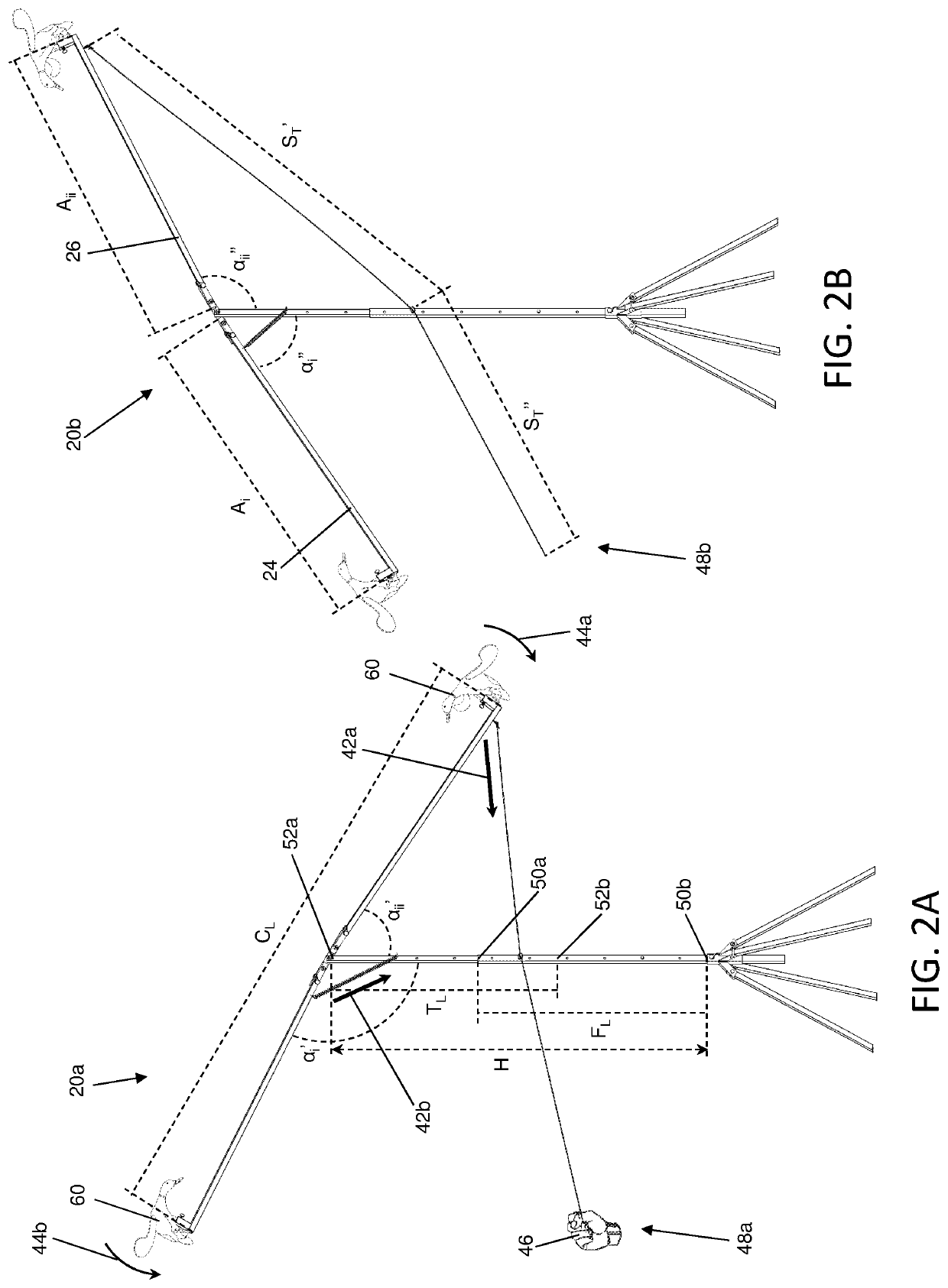Decoy stand with rotating arm
a technology of decoys and arms, applied in the field of waterfowl decoys, can solve the problems of increased chances of waterfowl luring into the hunter's spread, increased cost of products and weight, and more difficult to carry ou
- Summary
- Abstract
- Description
- Claims
- Application Information
AI Technical Summary
Benefits of technology
Problems solved by technology
Method used
Image
Examples
Embodiment Construction
[0019]The following description of the preferred embodiment(s) is merely exemplary in nature and is in no way intended to limit the invention, its application, or uses.
[0020]The decoy system 10 with rotating arm consists of a crossbeam 14 connected to a support beam 12 by a hinge 16 with an actuator 18 moving the crossbeam in a seesaw motion within a plane. The seesaw motion of the crossbeam causes one end of the crossbeam to raise in the air above the hinge while the opposite end simultaneously dips towards the water level below the hinge. Accordingly, the crossbeam is connected to the top end of the support beam at the midpoint of the crossbeam by the hinge. Further, mounting brackets 30 are positioned on opposite ends of the crossbeam which hold decoys 60 that simulate waterfowl landing and taking off from water as the crossbeam seesaws back and forth.
[0021]As particularly described herein, the support beam includes a top end 22a connected to the support beam mounting portion of ...
PUM
 Login to View More
Login to View More Abstract
Description
Claims
Application Information
 Login to View More
Login to View More - R&D
- Intellectual Property
- Life Sciences
- Materials
- Tech Scout
- Unparalleled Data Quality
- Higher Quality Content
- 60% Fewer Hallucinations
Browse by: Latest US Patents, China's latest patents, Technical Efficacy Thesaurus, Application Domain, Technology Topic, Popular Technical Reports.
© 2025 PatSnap. All rights reserved.Legal|Privacy policy|Modern Slavery Act Transparency Statement|Sitemap|About US| Contact US: help@patsnap.com


